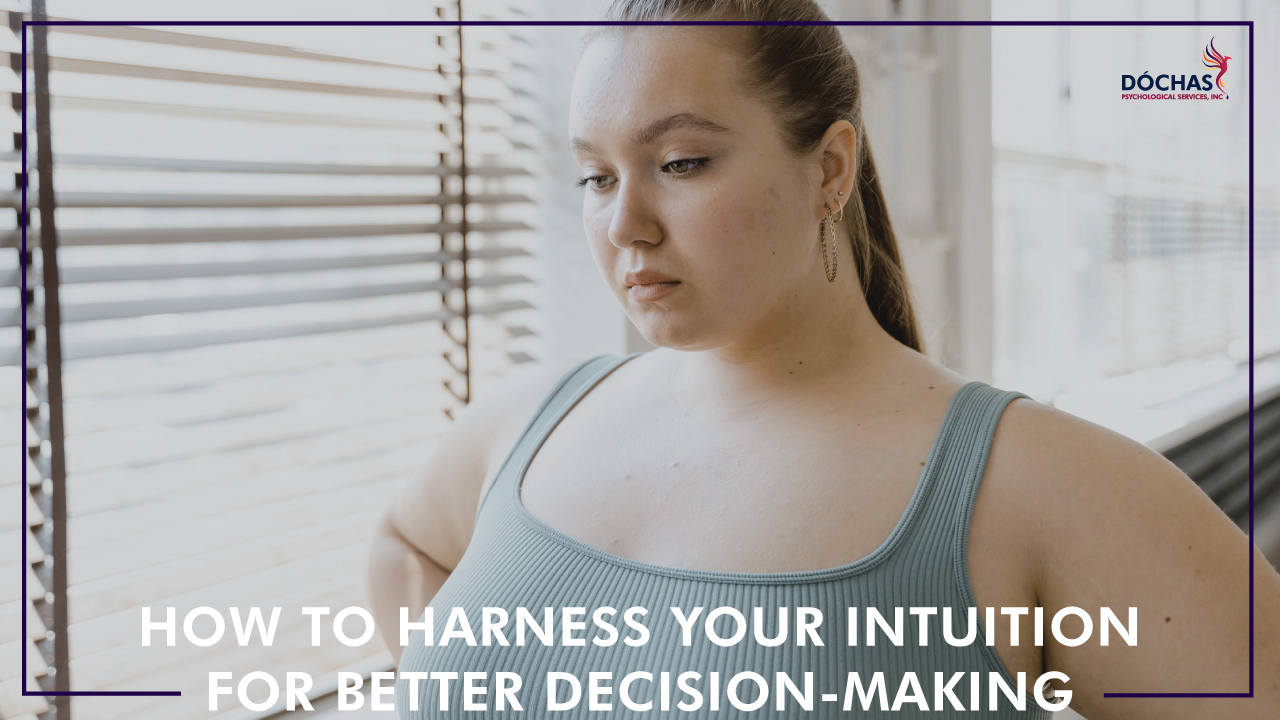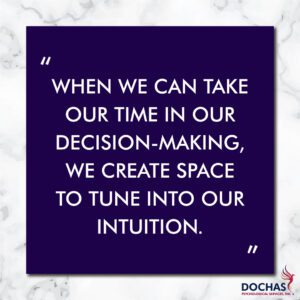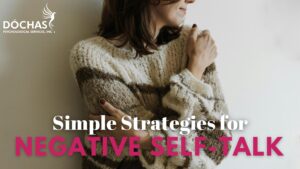Decision fatigue happens when you go through choice after choice and inevitably become too exhausted to reflect on decisions fully. This is where your intuition can come in! It’s Pooja here on the Dóchas blog, and I’m going to talk about harnessing your intuition for better decision-making.
Our body can give us some cues when we can become too head-focused. When body sensations feel out of balance, it’s time to pay attention. What does this feel like? Busyness in the brain can often feel like we’re becoming lopsided: our eyes are heavy, there’s tension in the upper parts of the body, and our five senses feel off in general. Overall, we’re just not feeling grounded.
Honouring our intuition into our decision-making can seem like the meeting of two different and perhaps opposing types of processes: one being more feeling-based and the other being more logical. So let’s talk about how we can balance those.
First off, how can intuition show up?
Oftentimes, intuition can show up in a number of ways, even without you realizing it. For example a quiet voice with simple words, a flash of a visual, a body sensation or a general sense that something is being called to be attended to. (Check out our previous blog on tuning in to your intuition). These types of sensations can arrive in response to a decision.
How to integrate intuition into decision-making:
Responses and building intuitive maps:
When we are presented with big decisions it can feel like we are lost at sea. Connecting with our intuition with what feels like a “full body yes,” a “full body no,” or a “quiet no” can provide us a map to refer to as we make these decisions.
An exercise you can do with yourself or with another can help you tune into what body sensations come up. It can be helpful to have a notepad or journal to make notes while you go through the following exercise:
1. Imagine a time where you felt a certain yes to do something in your life.
Notice the context. What images, sounds, and smells are linked to this?
Notice the sensations that arrive in your body.
It could feel energizing, uplifting, or grounding. Sensations of ease, warmth, buzzing, inner knowing or lightness might flow through parts of the body or the full body. That is your Yes map! Again don’t force it. If there is no sensation, that is also your Yes map! gain don’t force it, that is your Yes map! Note these sensations down if needed and if you feel no sensations, that is okay. Note these sensations down if needed.
2. Repeat this exercise, but this time recall a time when you felt an absolute no (try to avoid anything too distressing or traumatic).
Notice the context of the memory.
Notice the sensations in the body; this could feel like a withdrawing, a drop in the parts of the body, tension, an uncomfortable heat, a change in breathing, the need to say no etc.
Note whatever was felt and consider this to be your No map.
3. Lastly, try recalling a time when you felt a subtle/quiet no when making a decision.
This one may be difficult to access so spend some time exploring this one.
Notice the context of the memory.
Notice what sensations arrive. It could be subtle signs of tension, feeling stuck, something off or a slight uncomfortable feeling. Take note and refer to this as a quiet no map
Take a look at your notes and review the different sensations between the three types of responses. If you’re doing this with someone else, you can share these with each other.
Practice on small things:
Before trying this out for the more meaningful decisions, opt to practice on small and less meaningful choices first. This could be what to choose from a menu, which route to drive to a familiar place, or when to schedule a time to meet. Similar to building intuitive maps, make space to check in with sensations when you’re presented with different options—for example: coffee might cause no sensation in me, whereas orange juice might cause sensations that remind me of my absolute no map. Keep practicing checking in for those sensations for those small choices. We forget how often we make decisions, so consider integrating this type of practice into your day.
Take your time:
Remember if a decision is not an imminent, life-threatening thing, you have time to deliberate! And if there is time to re-evaluate or amend things, or even withdraw entirely after the decision has been made (a cooling period), use it! I cannot stress this enough. External and Internal pressures can help us get the job done but this can come with a cost. To get things done in a narrow time frame can really damage our decision-making and prevent a free flow of intuition to arrive.
Being pushed for time can create a stuckness with a decision we do not want to be in, as well as feelings of regret. When we can take our time in our decision-making, we in fact create space to invite sensations prior to making the choice we have selected in the decision-making process. This can help to develop a full body acceptance of our choice.
Tip: Carve out or advocate for extra time to nurture yourself in order to make a better decision. Consider modifying the pace for the steps involved and create intuitive check-ins into your internal landscape. Consider stating to others that this is a need of yours too!

I hope these tips help you to harness your intuition for better decision-making! I have found these helpful for me. Sometimes, though, when you’re faced with a big life decision it’s helpful to have professional advice, especially if the decision is tied to emotional experiences. Reach out to us here at Dóchas Psychological Services (info@dochaspsychologicalservices.com or 780 446 0300) for a helping hand if you’d like to speak with a counsellor about your situation.
About Dóchas Psychological
Dóchas Psychological Services is a well-established and trusted therapy clinic located in Spruce Grove, Alberta. At Dóchas we value the idea that everyone deserves a safe space. Through connection and education, our team works hard to build a trustworthy relationship with each of our clients. It is our goal to create a community for our clients to feel like they belong.
Disclaimer
Information provided through Dóchas Psychological Services blogs or vlogs is meant for educational purposes only. They are NOT medical or mental health advice. You can read more about our disclaimer here.










